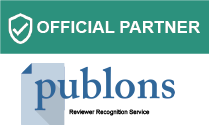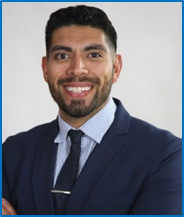Abstract
Training masks (TMs), marketed as simulated altitude training devices, suggest increased workout capacity, intensity tolerance and recovery. The claim is that the training mask improves respiratory power and breathing mechanics by strengthening the respiratory muscles through breathing resistance provided by the TM. The aim of this study was to compare the effects of a commercially manufactured TM in conjunction with bicycle ergometry, high intensity training (HIT) on selected lung function parameters. Volunteers (N=16) participated in this study and were randomly assigned to an experimental or control group. The experimental group wore the TM with progressive increased respiratory resistance and the control group wore the TM with no respiratory resistance. To determine lung function, pre- and post-test assessments consisted of forced expiratory volume at 1s (FEV1), forced vital capacity (FVC), the ratio of FEV1/FVC. Additionally, to determine the TMs effectiveness of maximal oxygen consumption pre- and post-time to failure during a maximum treadmill test was performed. Training was completed on a cycle ergometer on 3d/wk for 4 wks. Participants exercised at 85% of HRmax with a pedal rate of 100-120 rpm at individually set resistance levels. Training sessions consisted of 10 bouts of 30s exercise followed by 30s of active recovery for a total time of 10 minutes. The respiratory resistance for the experimental group progressively increased over the training period. Repeated measures ANOVAs yielded significant between group difference in FVC (p = 0.02) but not for FEV1 or maximum treadmill time. In conclusion, TMs in combination with HIT failed to improve lung function but created sufficient resistance to strengthen the muscles in respiratory ventilation.
Keywords
Exercise, Altitude, Training, Vital Capacity, Lung, Respiratory, Mask,References
- D.R. Bassett, E.T. Howley, Limiting factors for maximum oxygen uptake and determinants of endurance performance, Medicine & Science in Sports & Exercise, 32(1) (2000) 70-84.
- N. Smith-Blair, Mechanisms of diaphragm fatigue, AACN Clincal Issues,) 13(2) (2002) 307-19.
- J.F. Welch, B. Archiza, J.A. Guenette, C.R. West, W. Sheel, Effect of diaphragm fatigue on subsequent exercise tolerance in healthy men and women, Journal of Applied Physiology, 125(6) (2018) 1987-1996.
- U. Boutellier, R. Buchel, A. Kundert, C. Spengler, The respiratory system as an exercise limiting factor in normal trained subjects, European journal of applied physiology and occupational physiology, 65(4) (1992) 347-353.
- A.E. Downey, L.M. Chenoweth, D.K. Townsend, J.D. Ranum, C.S. Ferguson, C.A. Harms, Effects of inspiratory muscle training on exercise response in normoxia and hypoxia, Respiratory Physiology & Neurobiology, 156(2) (2007) 137-146.
- S.J. Enright, V.B. Unnithan, C. Heward, L. Withnall, D.H. Davies, Effect of high-intensity inspiratory muscle training on lung volumes, diaphragm thickness, and exercise capacity in subjects who are healthy, Physical Therapy, 86(3) (2006) 345-354.
- A. Aliverti, The respiratory muscles during exercise, Breathe, 12(2) (2016) 165-168.
- J.Y. Chaung, H.Y. Chang, Y.Y. Fang, S.E. Guo, The effects of threshold inspiratory muscle training in patients with chronic obstructive pulmonary disease: A randomized experimental study, Journal of Clinical Nursing, 26(23-24) (2017) 4830-4838.
- L.A. Griffiths, A.K. McConnell, The influence of inspiratory and expiratory muscle training upon rowing performance, European Journal of Applied Physiology, 99(5) (2007) 457-466.
- J.P. Porcari, L. Probst, K. Forrester, S. Doberstein, C. Foster, M.L. Cress, K. Schmidt, Effects of wearing the elevation training mask on aerobic capacity, lung function, and hematological variables, Journal of Sports Science and Medicine, 15(2) (2016) 379-386.
- S. Kido, Y. Nakajima, T. Miyasaka, Y. Maeda, T. Tanaka, W. Yu, H. Maruoka, K. Takayanagi, Effects of combined training with breathing resistance and sustained physical exertion to improve endurance capacity and respiratory muscle function in healthy young adults, Journal of physical therapy science, 25(5) (2013) 605-610.
- N.C. Biggs, B.S. England, N.J. Turcotte, M.R. Cook, A.L. Williams, Effects of simulated altitude on maximal oxygen uptake and inspiratory fitness, International Journal of Exercise Science, 10(1) (2017)127-13.
- O.F. Helal, M.A. Alshehri, M.S. Alayat, H. Alhasan, A. Tobaigy, The effectiveness of short-term high-intensity exercise on ventilatory function in adults with a high risk of chronic obstructive pulmonary disease, Journal of physical therapy science, 29(5) (2017) 927-930.
- Z. Hojati, R. Kumar, H. Soltani, The effects of interval aerobic exercise on forced vital capacity in non-active female students, Advances in Environmental Biology, 7(2) (2013) 278-282.
- S.S. Fatima, R. Rehman, Saifullah, Y. Khan, Physical activity and its effect on forced expiratory volume, The Journal of the Pakistan Medical Association, 63(3) (2013) 310-312.
- C. Dunham, C.A. Harms, Effects of high-intensity interval training on pulmonary function, European Journal of Applied Physiology, 112(8) (2011) 3061-3068.
- H.Y. Lee, S.H. Cheon, M.S. Yong, Effect of diaphragm breathing exercise applied on the basis of overload principle, Journal of physical therapy science, 29(6) (2017)1054-1056.
 |
|


 Articles
Articles






